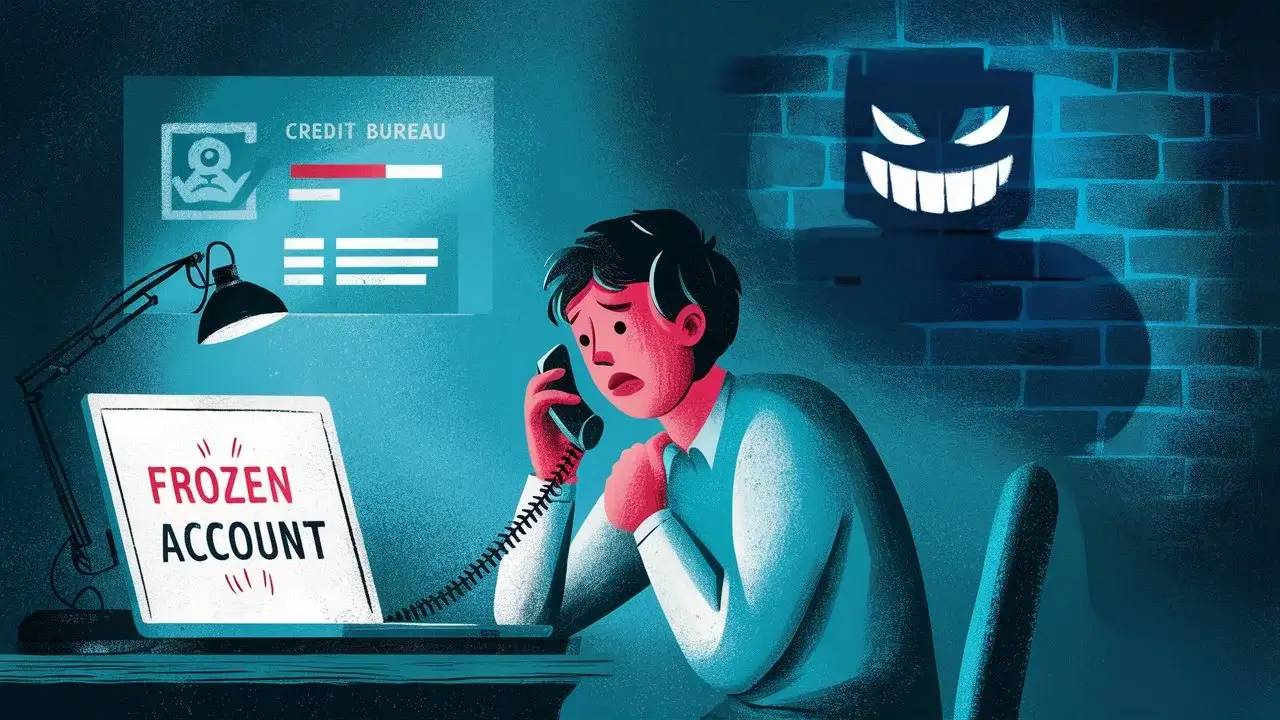-
Posted on: 23 Sep 2025

-
If you’re worried about identity theft or simply want to make it harder for anyone to open new accounts in your name, placing a security freeze (also called a credit freeze) on your TransUnion file is one of the most effective tools available. Below is a concise, research-backed guide that covers what a freeze does, why it matters (with recent data), how to place one with TransUnion (online / phone/mail / for minors), how to temporarily lift or remove it, and practical tips & caveats.
Why a credit freeze matters — the data
-
The Federal Trade Commission’s Consumer Sentinel Network collected 6.5 million consumer reports in 2024 across fraud, identity theft, and other consumer complaints — identity-related fraud remains a major category.
-
In 2024, consumers reported more than $12.5 billion in fraud losses, a sharp increase year-over-year. Freezing your credit doesn’t stop every scam, but it prevents new credit lines from being opened in your name — one of the most common and damaging outcomes of identity theft.
Federal law (effective September 21, 2018) requires that credit freezes be available free to consumers at each nationwide credit bureau (Equifax, Experian, TransUnion). That means placing, lifting, or removing a freeze should cost you nothing.
What a TransUnion credit freeze does (and doesn’t)
-
Does: Prevents most lenders and creditors from accessing your TransUnion credit file to open new accounts. This makes it much harder for identity thieves to get credit under your name. It is free, and it does not affect your credit score.
-
Doesn’t: Stop existing account activity (e.g., someone using a current credit card), block all forms of identity fraud (tax, medical, employment), or replace active monitoring and vigilance. It also only controls access to that bureau’s file — you must freeze all three bureaus if you want full protection.
Step-by-step: How to freeze your TransUnion credit report
You have three main channels: online, phone, or mail. For most people, online is faster.
1) Online (fastest / immediate)
-
Go to TransUnion’s Service Center / Credit Freeze page and create a free TransUnion Service Center account (if you don’t already have one). From there, you can add Freeze.
-
You’ll be asked to verify identity (name, SSN, date of birth, address, and likely additional verification questions). Follow the prompts to complete the freeze. TransUnion notes adding a freeze online takes effect almost immediately, and temporary lifts can also be immediate — but wait a few minutes before a lender requests your report.
Why online? Immediate effect: you get direct account control, and it’s the fastest way to both freeze and later lift a freeze.
2) By phone
-
TransUnion consumer support (for freeze questions/help): 800-916-8800 (Consumer Relations).
-
Automated line / interactive voice response for freeze management: 888-909-8872.
Phone requests are typically processed immediately by the automated system; if verification can’t be completed automatically, you’ll be routed to an agent. Phone hours are posted on TransUnion’s site.
3) By mail (useful when you can’t verify online or for special cases)
Send a written request including your full name, current address, Social Security number, and copies of identity/address documents to TransUnion’s mail address:
TransUnion will tell you which documents to enclose; common examples are a copy of your Social Security card, driver’s license, or a utility bill. Mail requests may take up to three business days from receipt to take effect.
Freezing a minor’s (child’s) credit / protected consumer freeze
-
If your child (or an incapacitated adult) is under the threshold for a “protected consumer freeze,” TransUnion allows a parent/guardian to request a freeze and will create a credit file for the child if one does not exist, then freeze it. This protected freeze remains until a guardian requests removal; minors may be able to remove it themselves at specified ages (TransUnion notes a minor can request removal at age 16 in many cases). Expect to mail documentation proving your authority and the child’s identity.
How to temporarily lift (thaw) or remove a freeze
-
Temporary lift (thaw): If you’re applying for credit (loan, mortgage, new card), you can temporarily lift the freeze for a specific creditor or for a set time window. You can do this online (recommended), by phone, or by mail. TransUnion typically processes online/phone requests immediately (or within an hour); mailed requests can take up to three business days.
-
Permanent removal: Request removal via the TransUnion Service Center, phone, or mail. It stays in place until you ask TransUnion to remove it.
Tip: Ask the lender which bureau they will check. If they only query one bureau, you may only need to lift that bureau’s freeze temporarily (but verify to avoid delays).
What documents and information do you likely need?
Commonly required items (especially for mail requests or agent-assisted phone requests):
-
Full legal name
-
Social Security number (SSN)
-
Date of birth
-
Current mailing address (and previous addresses if requested)
-
Copy of a government-issued photo ID (driver’s license, passport) OR Social Security card; do not send originals.
-
Proof of current address (utility bill, bank statement, lease, or similar).
For minors or protected consumer freezes, you’ll need documentation proving authority (birth certificate, custody/guardianship documents, power of attorney) in addition to the child’s ID documents.
Freeze vs. lock: which to choose?
-
Freeze: Free by federal law, slightly more formal/legal; you control it via each bureau’s service center, phone, or mail. It may require account setup online for the fastest controls.
-
Lock: Often part of a paid identity-protection product; may be faster to toggle (app-based), but it’s not governed the same way as a freeze and can be tied to a paid subscription. Experts generally recommend a freeze for the baseline, cost-free protection.
Practical caveats & pitfalls
-
Three bureaus: A freeze is bureau-specific. Freeze TransUnion and Equifax, and Experian, if you want lenders blocked at all three.
-
Housing/tenant screening issues: TransUnion has faced enforcement actions in the past for problems related to tenant screening and how freezes/locks were represented — if you rely on background checks or rent decisions, understand how a freeze might affect those processes and get written clarification from landlords. (Regulators fined TransUnion in recent years related to tenant screening and freeze/lock representations.)
-
Timing for applications: If you’re shopping for a mortgage or auto loan and will trigger multiple credit pulls, plan lifts carefully (temporary lifts for a window or per-creditor). Online/phone lifts are usually instant; mail is slower.
After you freeze: ongoing monitoring & additional steps
A credit freeze is a strong defensive move, but combine it with:
-
Regular credit report reviews — get free reports (AnnualCreditReport.com offers the official free reports) and check for unfamiliar accounts.
-
Fraud alerts — less restrictive than a freeze, but free and useful if you suspect risk; it prompts creditors to verify identity before extending credit.
-
Monitor financial accounts — watch bank and card statements for unauthorized charges.
-
Secure personal information — strong passwords, multi-factor authentication, and minimize sharing of SSN.
-
File reports — if you become a victim, file reports with the FTC (IdentityTheft.gov) and local law enforcement; keep records. (FTC/Consumer Sentinel remains the clearinghouse for identity fraud metrics.)
Quick reference (useful links & phone numbers)
-
TransUnion Credit Freeze page / Service Center (online freeze/unfreeze): TransUnion Service Center (see TransUnion site).
-
TransUnion phone numbers: Automated IVR 888-909-8872; Consumer Relations 800-916-8800 (hours posted online).
-
TransUnion mail address for freeze requests:
TransUnion
P.O. Box 160
Woodlyn, PA 19094.
Bottom line
Given the scale and cost of modern identity fraud reported by the FTC, placing a free credit freeze at TransUnion is a low-cost, high-impact defensive step — especially if you aren’t planning immediate new credit applications. For maximum protection, freeze all three nationwide credit bureaus. If you need to apply for credit later, use TransUnion’s online service (or phone) to temporarily lift access for a specific creditor or time period; those methods are fast and usually processed instantly.
null
-








